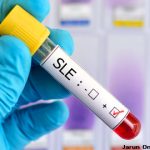One of these children attended my kids’ elementary school, where his name is memorialized in the school library.2
Recent biochemical insights into progeria have identified some candidate drugs that may effectively metabolize progerin and displace it from the nuclear membrane. Interestingly, these include two widely prescribed agents used to halt certain effects of aging, bisphosphonates and statins.3 Although they appear to provide some benefit, they have not remedied the predicament of progeria.
This raises the question: Can aging be halted?
The solution to this vexing question would not only improve the lives of children with progeria, it would have the potential to dramatically alter society as a whole and profoundly disrupt the practice of medicine. Imagine a world where those diseases that rob us of our youth and grace disappear, where heart disease is rarely seen, where the hazards of osteoarthritis disappear and eliminate the need for joint arthroplasty, or where the incidence of neurodegenerative diseases declines precipitously, forcing nursing homes to shutter.
Skin Deep

Smetek / Science Source.com
We are nowhere near achieving these targets. In the interim, countless pills and minerals of questionable benefit crowd the anti-aging space. And of course there is one faux remedy for aging, a deadly poison turned dermatologists’ best friend—botulinum toxin A. This neurotoxin was best known as the highly lethal protein capable of paralyzing those ingesting it. Taming the botulinum toxin’s paralyzing effects led to it first being used in the neurology clinic, where its benefits in reducing muscle spasticity were readily apparent. Soon afterward, it migrated to the ophthalmologist’s chair, where it gained acceptance as a highly effective treatment for another spastic disorder, blepharospasm.
For years, it languished as a novel product for a niche market until the serendipitous discovery that when used to treat spastic eyelids, it also smoothed any nearby crow’s feet or under-eye wrinkles. For some of these patients, it seemed to turn back the clock. Quel visage! The toxin has acquired a growing list of clinical indications, ranging from migraine headache relief to managing overactive bladder function to relieving the spastic vascular supply in fingers afflicted by Raynaud’s phenomenon. Yet botulinum toxin’s greatest use remains cosmetic, magically creating a mirage—altering appearances.
If we are going to reverse the aging process, we need to better understand what is happening deep inside our cells. What actually causes us to age?
Vino Vivo
If we are going to reverse the aging process, we need to better understand what is happening deep inside our cells. What actually causes us to age? One of the most plausible explanations for the mechanistic basis of aging is the mitochondrial free radical theory of aging, which argues that aging and its related diseases are the consequence of free radical-induced damage to cellular macromolecules and the inability to counterbalance these changes by endogenous antioxidant defenses.4
